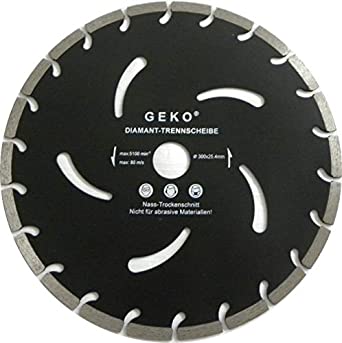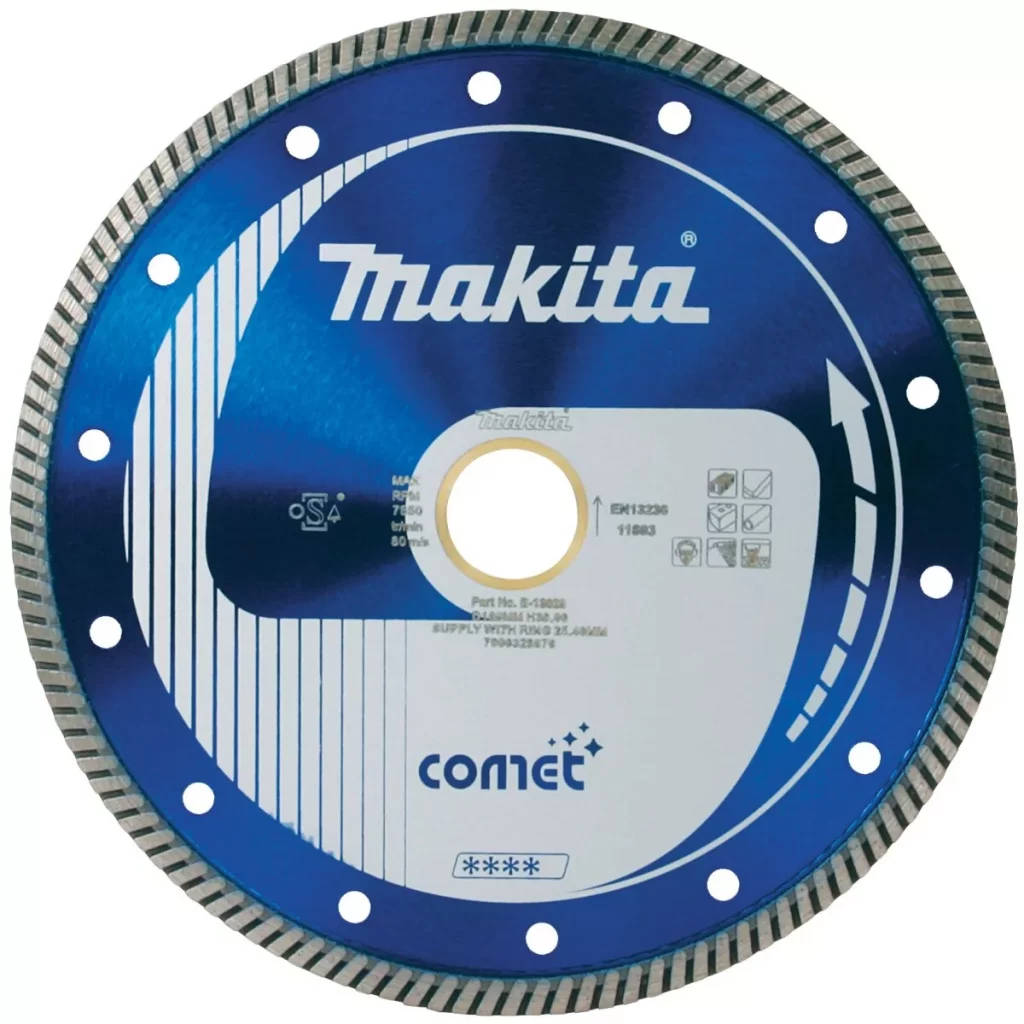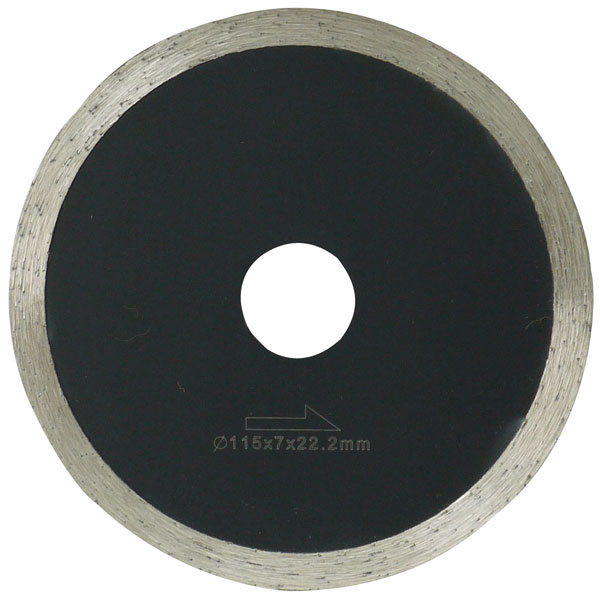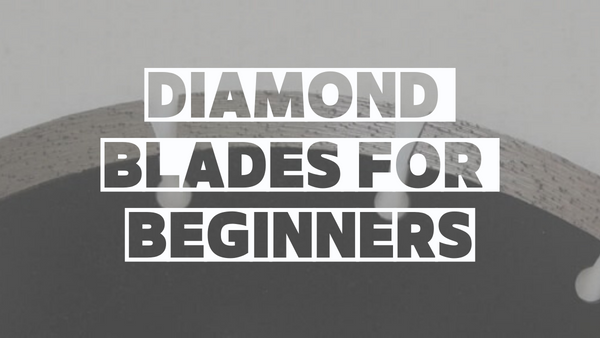Diamond Blades for Beginners
Diamond blades are the most popular choice for abrasive cutting throughout all building, construction, and utilities industries. They are best known for their grinding properties against asphalt, concrete, and stone. Throughout this article, we will uncover everything that you need to know about diamond blades. Allowing you to understand why they take the driving seat when it comes to any type of abrasive cutting.
What is a diamond blade?
To help discover why diamond blades are so popular throughout the construction industry, it is imperative to understand their anatomy. One of most popular questions that people ask about diamond blades is, “do they really contain diamonds?” Well, yes…. in fact they do…and for very good reason.
If we delve into their geology, the diamond is the hardest natural mineral to be found on the planet. Therefore, by applying this mineral to a blade, it makes it strong enough to cut/grind through any other material that exists on the earth. In short, the harder the material, the more diamonds are found within a specific blade.
During their production, diamonds are mixed with a precise amount of powered metals to produce a bond. This mixture is poured into a mould, compressed and heat treated to form the segment. These segments are attached to the steel core by laser welding, sintering, or silver brazing. The working surface of the blade is dressed with an abrasive wheel to expose the diamond particles.
How do diamond blades work?
Diamond blades are used in many different applications. More so, it is important to remember that diamond blades do not actually cut anything at all. If fact, diamond blades are designed to grind through materials.
The difference between a concrete and asphalt diamond blade is the composition of the bond that suspends the diamonds within the blade. Different composites make up the wear rate of the blade and how quickly newly exposed diamonds appear on the surface. In other words, the harder the material, the quicker you will expose diamonds to the cutting surfaces, and the softer a blade you will need.
What are the different types of diamond blade?
Now that we have concluded that a diamond blade is the correct choice for your project, you will face several different options. Getting the right style of blade can assist you in the speed of your project.
Segmented Rim

One common problem that users can find with diamond blades is their overheating. The segmented rim is an ideal choice if you do not have any access to water to cool your blade. This blade consists of 10 to 14 different segments with groves in between one another. These groves assist operators by removing large amounts of debris at the same time as transferring heat evenly across the entire blade. If a diamond blade overheats, it will begin to warp and become unsafe to use.
Segmented rim diamond blades are built for cutting bricks and concrete. As a result of being a very aggressive type of blade, they don’t leave clean cuts. Making them unsuitable if you were cutting delicate marble or stone.
Turbo Rim

Turbo blade rims are similar to a segmented. Although you could get confused about which is which, as their components are the same. They are divided up into sections the same as a segmented rim. The biggest difference between the two blades is that a turbo rim can handle intence heat.
A turbo rim is designed with air holes in the steel core to encourage far better airflow and heat distribution. Additionally, these blades suit both wet and dry conditions, making them far more beneficial on the whole.
This type of diamond blade is extremely popular, as it will leave a clean cut. It is a common choice for use on bricks, concrete and limestone.
Continuous Rim

Finally, the continuous rim is the last of the common styles that you will see, when researching diamond blades. These blades use water to cool them down and allowing for a longer lifespan, better removal of debris, and less friction in the cutting zone.
This type of blade is the slowest available on the market, nevertheless, will produce the cleanest and most flush cut. That’s why this blade is used for stone, marble, granite, or porcelain tiles.
What diamond blade is best?
All things considered, before deciding which diamond blade to use, you are best evaluating the work you’re going to undertake first. Some examples could be cutting tiles for a wall, resurfacing part of a road, specific wet or dry cutting, etc. Having a clear idea of what you are cutting will save you a lot of time and cost in the long run.
We already know that different blades are better suited for different jobs, but which is best for which job?
Here are some examples of some tasks and the blades that would be suit
| Task | Hard/ Soft Bond | Blade Type | Wet/ Dry |
|---|---|---|---|
| Asphalt road removal | Hard | Segmented Or Turbo | Either |
| Tile Cutting | Soft | Continuous | Wet |
| Marble Worktop Templating | Soft | Continuous | Wet |
| Concrete removal | Hard | Segmented | Either |
| Block Paving Blocks | Hard | Turbo | Either |
| Roadside curbs | Hard | Segmented | Either |
What happens if you use the wrong blade?
Using an incorrect type of blade for your project can have quite serious consequences. As a result, multiple different specialised diamond blades are available to ensure the safety of operators. The wrong blade will wear away far too quickly because the bond is too soft. However, if the bond is too strong, the blade will overheat, warp and become a major health and safety risk. If you’re unsure about which diamond blade to use, you should seek professional help.
What common tools would you expect to use a diamond blade?
Diamond blades are extremely popular for their cutting properties and are ideal for the following pieces of equipment:
Where can you hire a diamond blade and quality tools from?
Our expert team at WHC Hire share the knowledge and experience to get the job done. With a vast range of hand and power tools and diamond blades, you can be sure to receive the latest UK market equipment, in perfect working order, on time and when you need it. For over 20 years, WHC Hire have been supplying the highest quality of equipment to the public and UK businesses across the country. With 3 established depots in Worcester, Tewkesbury and Chipping Norton, with our team on hand when you need us. For more information about diamond blades and tool hire, click here.

